Photos with this report (click to enlarge) | |||
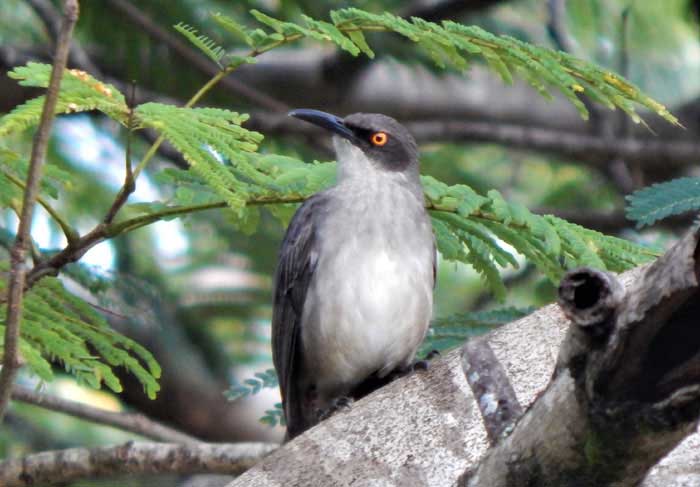 Grey Trembler |
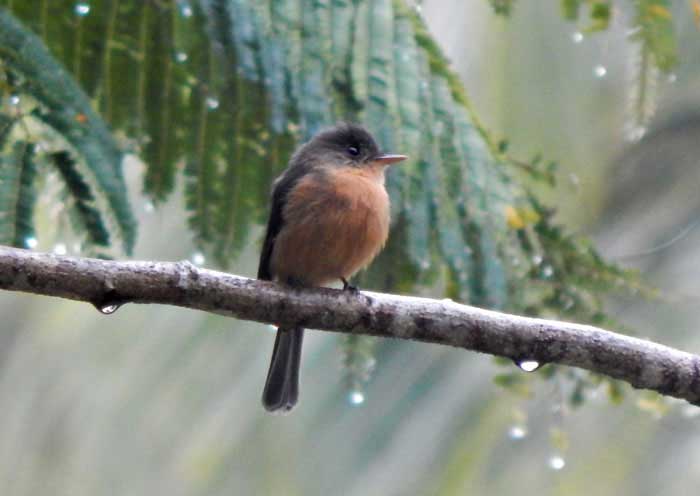 St. Lucia Pewee |
 St Lucia Oriole |
|
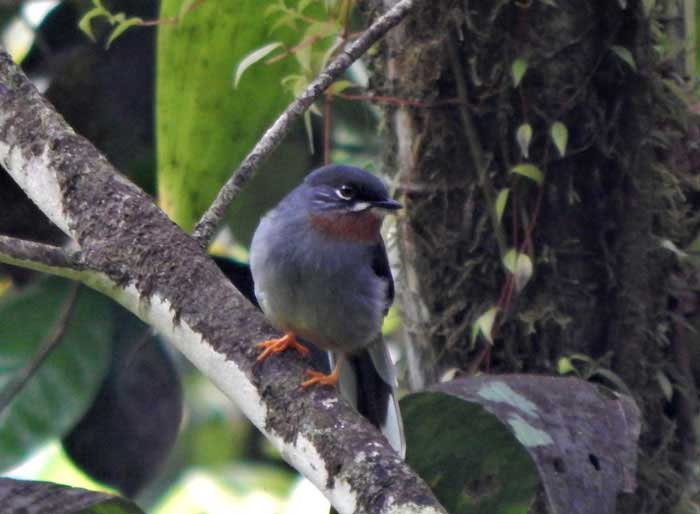 Rufous-throated Solitaire |
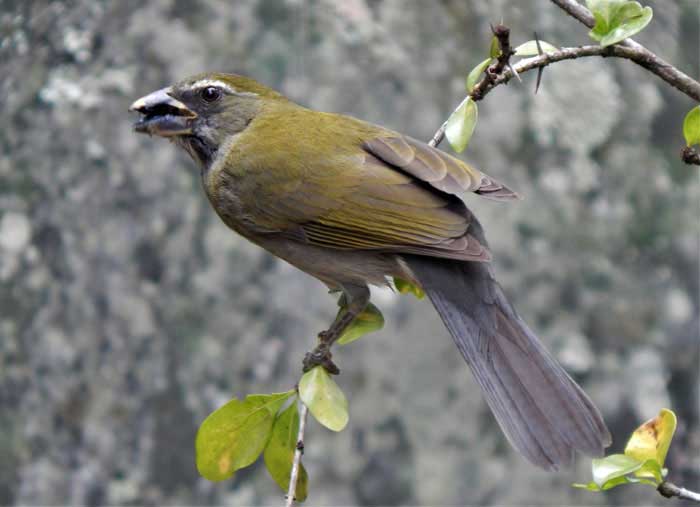 Lesser Antillean Saltator |
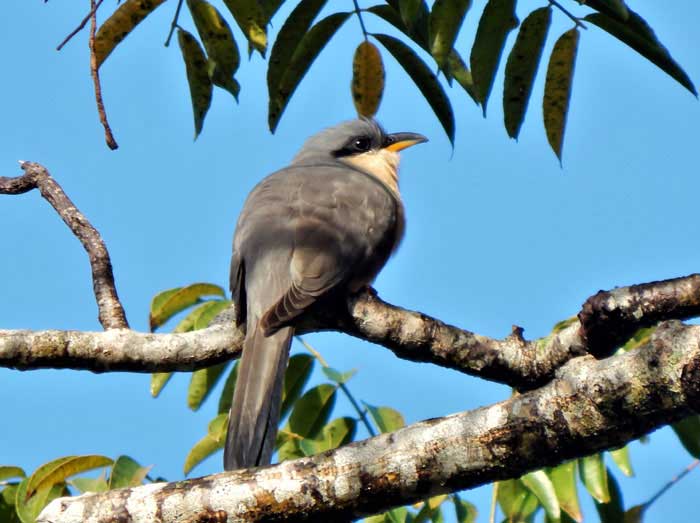 Mangrove Cuckoo |
|
This was a last-minute trip booked on a British Airways promotional deal for return flights from Gatwick, UK and 7 nights at the Marigot Bay Beach Club on the west coast of the island to celebrate our wedding anniversary. The location appealed to us as it was a small friendly hotel with rooms scattered across a well-vegetated hill-side surrounded by forest and we were not disappointed. We also booked transport to and from the airport ($100 each way), which lies at the southern tip of the island and I booked a one-day hardcore birding trip with St Lucia Wildlife www.stluciawildlife.com which was excellent and is thoroughly recommended.
We took it slowly and aimed to see as many species as we could in the Marigot Bay area, before cleaning up on the remaining birds with the booked St Lucia Wildlife birding trip. We saw 59 species and had great views of all the target species including the five extant endemics: St Lucia Parrot, St Lucia Oriole, St Lucia Black Finch, St Lucia Warbler and St Lucia Pewee, plus Grey Trembler and White-breasted Thrasher which are only found here and on Martinique, as well as Lesser Antillean specialities such as Lesser Antillean Euphonia, Rufous-throated Solitaire, Pearly-eyed Thrasher, Scaly-naped Pigeon, Green and Purple-throated Caribs, Lesser Antillean Crested Hummingbird, Lesser Antillean Saltator, Lesser Antillean Flycatcher, Lesser Antillean Swift and Lesser Antillean Bullfinch and the more widespread Caribbean Elaenia, Caribbean Coot, Broad-winged Hawk, Caribbean Martin, Mangrove Cuckoo, Zenaida Dove, Eared Dove, Carib Grackle, Black-faced Grassquit, Shiny Cowbird and Common Ground-dove. Scarcer species seen included: Peregrine, Tricoloured Heron, Little Egret and Red-billed Tropicbird.
Itinerary
• 8 Feb: Taxi from airport to Marigot Bay
• 9-11 Feb: Marigot Bay area
• 12 Feb: Boat trip to Anse Cochon
• 13 Feb: Day-tip to Anse Cochon
• 14 Feb: Hardcore birding tour – east coast dry woodland, Des Cartiers Trail and southern tip of island
• 15 Feb: Final full day at Marigot Bay and late taxi to airport
Principal sites
The main sites we visited are listed below.
1) Marigot Bay:
a) Resort grounds. Well vegetated gardens rising-up from the north shore of Marigot Bay. Our room (Firefly 15A) was well situated with large trees in front and to the side plus a patch of remnant forest behind, so most species could be seen from a chair on our balcony! These included lots of very tame Lesser Antillean Bullfinch, Bananaquit and Zenaida Dove but also included forest birds such as St Lucia Peewee, Grey Trembler, Scaly-breasted Thrasher, Lesser Antillean Saltator, Scaly-naped Pigeon, Caribbean Elaenia and Mangrove Cuckoo. All three hummingbirds: Purple-throated Carib, Green-throated Carib and Lesser Antillean Crested Hummingbird were easily seen here nectaring on the flowering shrubs and trees, whilst other birds passed through at different times of day including Grey Kingbird and Tropical Mockingbird in the trees and Black-faced Grassquit and Common Ground-dove on the lawns. We also saw one St Lucia Warbler here in the trees next to the spa rooms, but this species was easier to find on the “Nature trail” that runs north up the slope from the top of the resort.
b) Nature trail. Find this by heading up the funicular chair-way to the Oasis Marigot rooms and then walk east to find the trailhead gate in the NE corner of the resort. This trail works its way through some taller wetter forest before heading into drier shorter forest on the ridge. The ridge trail heads west to a viewpoint, whilst the trail east heads up the ridge (very steep in places). There is also a trail heading east immediately after entering the forest, which joins up with another trail heading both up and down the slope. Best birding was in the first few metres of the nature trail, where in addition to birds already seen in the hotel grounds we saw Bare-eyed Thrush and best of all, a male St Lucia Oriole (listen out for its harsh calls) as it lurked at mid-level in the small trees. Further along the trail we regularly saw St Lucia Warbler (listen out for its song). Lots of doves flushed up from the forest floor on early morning visits – these were mostly Zenaida Doves but there were also one or two elusive Ruddy Quail-doves. The viewpoint gives an opportunity to look into the canopy of the trees and we saw our first Black-whiskered Vireo and Lesser Antillean Flycatcher here plus American Kestrel and Broad-winged Hawk overhead, a distant Royal Tern feeding in a bay to the south and on our last morning, two Lesser Antillean Swifts over the canopy in low cloud, our only ones of the trip.
c) Marigot beach and bay. During the day, the bay was visited by the odd fishing Osprey, Brown Pelican and Brown Booby with Magnificent Frigatebird more regular in the early morning and towards dusk. There were also some large dip-feeding bats to be seen here at night. The area is now too busy and developed for the waterfowl that once occurred here but a walk on raised boards through the remnant mangroves produced our only Northern Waterthrush and Yellow Warbler. Carib Grackles were more regular in the beach area than in the resort grounds.
2) Anse Cochon:
a) Anse Cochon is a very attractive bay and has excellent snorkelling. We visited it once by boat and a second time by taxi. The Ti Kay resort here is very luxurious but $20 buys you a day-pass for two which you can reimburse for food in the beach bar. The boat-trip produced lots more Brown Boobies plus a few immature Red-footed Boobies far offshore. There was a Little Blue Heron on the rocks and the trees of Ti Kai resort produced more Scaly-breasted Thrashers, Caribbean Elaenias, Lesser Antillean Saltators and Zenaida Doves etc.
3) Hardcore birding tour:
I was picked up at 0530hrs by Willow, one of the St Lucian Wildlife Ambassadors and expertly guided around key birding sites. The trip costs $150 per person if there are two of you sharing and is excellent value for money, given the rather high costs of all day-trips on the island, the often-difficult driving conditions and the excellent local knowledge.
a) East coast dry scrubby forest – We made two stops just after dawn in the drier forest between Dennery and Praslin. The first stop very quickly produced the key target species: a White-breasted Thrasher that perched showing well for many minutes, emitting a low sub-song. It eventually flew to another perch where it showed again more briefly. Also here were St Lucia Warbler, Caribbean Elaenia, Lesser Antillean Crested Hummingbird and Black-whiskered Vireo. A St Lucia Black Finch sang its buzzy song from woodland just across the road but remained elusive. A second stop in this habitat a little further south produced three more White-breasted Thrashers and an elusive pair of St Lucia Black Finches, of which the female eventually gave close prolonged views on the ground. This stop also produced Mangrove Cuckoo, Bare-eyed Thrush, St Lucia Warbler and Lesser Antillean Saltator along with more widespread species.
b) Des Cartiers Trail. With all the dry forest birds seen well, we headed inland to the world-famous Des Cartiers trail in the central montane rainforest It was very dark in the forest due to heavily overcast conditions and Willow worried that the birds would not show. However, an easy 20-minute walk along the trail led us to an open area which gave great views over a densely forested valley. Within 30 minutes here we had seen some 15 St Lucia Parrots, both in flight and perched, whilst the canopy of adjacent trees provided excellent views of Rufous-throated Solitaire and Lesser Antillean Euphonia, as well as Grey Trembler, Scaly-breasted Thrasher and St Lucia Warbler, plus Purple-throated Carib, Broad-winged Hawk and Bananaquit. A briefly glimpsed Pearly-eyed Thrasher was the only one of the trip. We also spotted a Tarantula on the path plus an Indian Mongoose on the road just outside the forest.
c) Aupicon wetlands. These were reached by entering private land through a locked gate for which St Lucia Wildlife have an entry agreement. A short track through open grassland led to a large shallow brackish lagoon busy with waterbirds. A Great Blue Heron flew over and was immediately followed by a Peregrine Falcon, both the only ones of the trip. The lagoon itself held large flocks of Common Gallinules (Moorhens) and Blue-winged Teal, plus smaller numbers of Caribbean Coot, Little Blue Heron, Great White Egret, Snowy Egret and Little Egret. There were 2 Tricoloured Herons on the fringes plus a Belted Kingfisher. Both American Wigeon and Northern Shoveler had been seen here recently.
d) Southern tip of the island. The vicinity of Hewanorra Airport is the best site on the island for both Eared Dove and Shiny Cowbird and we saw these species quickly, whilst a muddy drainage ditch next to the road held 2 Solitary Sandpipers. The headland of Cap Moule à Chique was a scenic site for 4 Caribbean Martins and at least 7 Red-billed Tropicbirds cruising along the cliffs, whilst a final stop at a beach SW of the airport produced nice views of 4 Royal Terns and a Brown Pelican roosting on posts, plus more Brown Boobies and Magnificent Frigatebirds offshore.
4) Roadside birds
The taxi rides to and from the airport provided a quick taste of St Lucian birds. Cattle Egret was widespread in open grassy areas and we saw a Great White Egret at the Airport, together with a group of Collared Doves near the car park there. Widespread birds on roadside wires and fences included Grey Kingbird and Carib Grackle, plus the odd Tropical Mockingbird and Zenaida Dove. Smaller birds were harder to identify but included Bananaquit and Lesser Antillean Bullfinch. Both American Kestrel and Broad-winged Hawk were also seen a few times together with Magnificent Frigatebirds close to the coast.